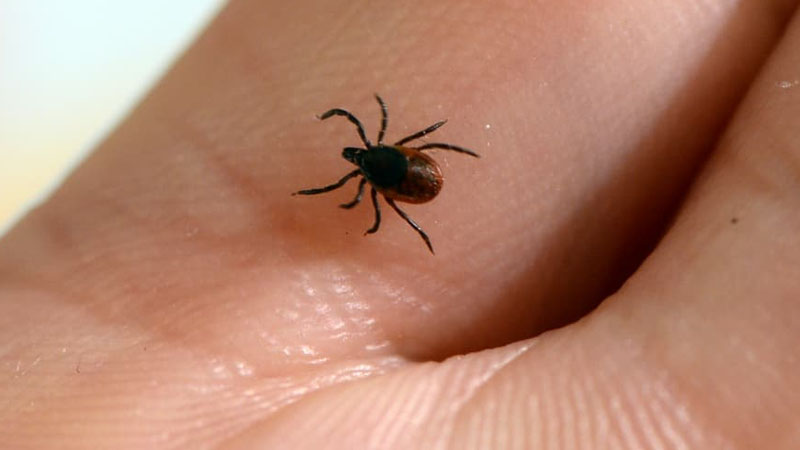
Rising Lyme Disease Cases in England Trigger Health Alert with Focus on Symptoms and Signs
As spring beckons and people increasingly venture outdoors, there’s a growing concern about Lyme disease, prompted by warnings from health officials. The UK Health Security Agency (UKHSA) has highlighted a significant rise in Lyme disease cases, attributing the increase to the tiny, often unnoticed carriers of the disease: ticks.
These small arachnids thrive in concealed, grassy environments and are potential carriers of the bacterial infection known as Lyme disease, which saw a significant spike in reported cases last summer. In a comparison between the warmer months of April to September in 2023 and the previous year, England experienced a notable surge in Lyme disease cases.
The UKHSA recorded 882 acute instances of the disease, a sharp increase from the 635 cases reported in the same period the year before. A significant majority, over 70% of these cases, were reported in the South West, South East, and London regions. It’s worth noting that these figures represent the cases confirmed in laboratories, suggesting the actual number of Lyme disease instances could be even higher, given the potential for underreporting, reports the Mirror.
The UKHSA expressed concerns that the figures they have might not fully capture the extent of Lyme disease’s impact, hinting at a potentially larger issue. Lyme disease stems from the Borrelia burgdorferi bacteria, which is typically transmitted to humans through the bite of an infected tick. These ticks, which resemble tiny spiders, inhabit grassy and wooded areas and feed on the blood of mammals and birds.
Often, their bites go unnoticed because they’re usually painless, making it difficult for individuals to realize they’ve been bitten. Despite the relatively small size of ticks, about 10% of them in the UK are carriers of Lyme disease, making it crucial for anyone who suspects they’ve been bitten to seek medical attention promptly. An early indication of Lyme disease is a distinct rash that may form around the site of the bite, appearing as a circular or oval shape.
This rash can emerge anywhere from one to four weeks following the bite, though in some cases, it may take up to three months to appear. The National Health Service (NHS) provides insights into identifying the rash, which can vary in appearance based on skin tone. On lighter skin, the rash may present as flat or slightly raised, showcasing pink, red, or purple hues. However, on darker skin tones, the rash might be less visible and resemble a bruise, making it more challenging to detect.
Other common symptoms include:
- A high temperature
- Feeling hot and shivery
- Headache
- Muscle and joint pain
- Tiredness and loss of energy
If treatment is delayed, some people with Lyme disease can experience severe side effects. These can include:
- Severe headaches and neck stiffness
- Facial palsy (loss of muscle tone or droop on one or both sides of the face)
- Arthritis with severe joint pain and swelling, particularly in the knees and other large joints.
- Intermittent pain in tendons, muscles, joints, and bones
- Heart palpitations or an irregular heartbeat (Lyme carditis)
- Episodes of dizziness or shortness of breath
- Inflammation of the brain and spinal cord
- Nerve pain
- Shooting pains, numbness, or tingling in the hands or feet.
To avoid infection in the first place, Lyme Disease UK recommends:
- Take effective tick repellent on outdoor trips and a tick removal tool
- Wearing permethrin-treated outdoor clothing for high-risk activities and occupations
- Avoid walking through long grass and stick to pathways wherever possible
- Wear light-coloured clothing, as this will make it easier to spot ticks and brush them off
- Wear long sleeves and tuck trousers into socks
- Shower and carry out a thorough tick check on yourself, your children, and your pets when you get home.
“Remember that ticks can be as small as poppy seeds, so careful checking is key,” the charity adds. “Pay special attention to the hairline and behind the ears of young children.”
To safely remove a tick, the NHS advises:
- Use fine-tipped tweezers or a tick-removal tool. You can buy these from some pharmacies, vets, and pet shops
- Grasp the tick as close to the skin as possible
- Slowly pull upwards, taking care not to squeeze or crush the tick. Dispose of it when you have removed it
- Clean the bite with antiseptic or soap and water.
